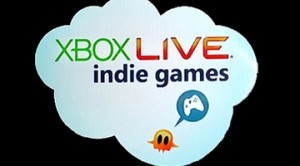XBOX Live Indie Games (XBLIG) launched in January 2012 and many believed it would usher in a golden age for independent development as it was the first time since Sony’s Net Yaroze (which launched in 1997) to allow garage developers to publish directly to a video game console. The only requirement to joining this marketplace was knowledge of XNA and an annual licensing fee of $100.00. What made this prospect even more enticing for developers was that there would be a dedicated area for their indie games to be showcased. This area is titled the Indie Channel and is available to be viewed by the entire XBOX Live audience.
But ultimately this experiment failed as the Indie Channel was quickly flooded with low quality games; clones, barely functional prototypes and numerous games that transformed the controller into a vibrator. These games turned the XBOX Live audience away from exploring the games XBLIG had to offer. Each iteration of Microsoft’s Dashboard led the Indie Channel to being pushed further into the background. When the Indie Channel was launched navigating to the channel was only three screens from the home screen, and each following update made it more difficult to find, even if you knew what you were looking for. Currently the Indie Channel is buried, and it appears Microsoft is attempting for this experiment to be forgotten.
In reality, the true rise of indie games came well before XBLIG and its Indie Channel, and it came from unexpected source. Apple, which previously was known for having poor video game support in comparison to PC, launched the iPhone on January 9th, 2007. At the time it was the most powerful phone in the western market and the user interface was specifically built as a mobile device, as opposed to being built as a mobile computer. This platform had many features that enhanced the mobile market, and on March 6, 2008 Apple released the Software Development Kit that would allow anyone to develop for Apple’s iOS platform.
Unlike XBLIG, there was no separation between apps or games made by independent developers and larger studio development teams. Both parties were thrown into the same stew and had to fend for themselves based on merit and not on advertisement budget. While this eventually changed when the market became oversaturated, this even playing field still gave Indies a good few years to take off.
Scope is an aspect that played heavily into the difference of these two markets. Making a profitable small-scope game for XBLIG is infinitely more difficult than an iPhone game because XBLIG developers are fighting against the player’s expectation based from other games in their respective marketplace. When a player sits down in front of a home game system, the expectation is to have a very different experience than when they boot a quick app on their phone. The game on their phone is allowed to be a distraction, while the game on their system is supposed to be an event.
The iPhone also had the advantage of providing a new control scheme of a multi-touch display without any usable physical buttons. This allowed new game design concepts to shine over stagnant ideas. Iteration is costly, but innovation is risky. It’s one of the reasons why mainstream games’ budgets have grown to be so massive.
Small development teams don’t have the ability to iterate as well as larger companies with bigger bank accounts, but even small teams can efficiently innovate. This injection of creativity fundamentally changed the market. Hoards of new gamers began to invest their time and money in games that were inventing new genres and different gameplay. Some well-known examples are “Doodle Jump,” “Canabalt” and “Cut the Rope.” (Though not all of these games released on the iOS platform first, these games sold the most units in that marketplace.) Once the iOS market became oversaturated, clever Indies moved onto another market – the PC.
Indies filled the gap of “B Grade” games over the past few years, but while indie games soared high, the PlayStation 3, Wii and XBOX 360 went through some drastic growing pains. The continuation of this article will explore the PlayStation Network hack, poor third party software sales for Wii and how Microsoft’s Dashboard priority shifted from video games to media consumption.






